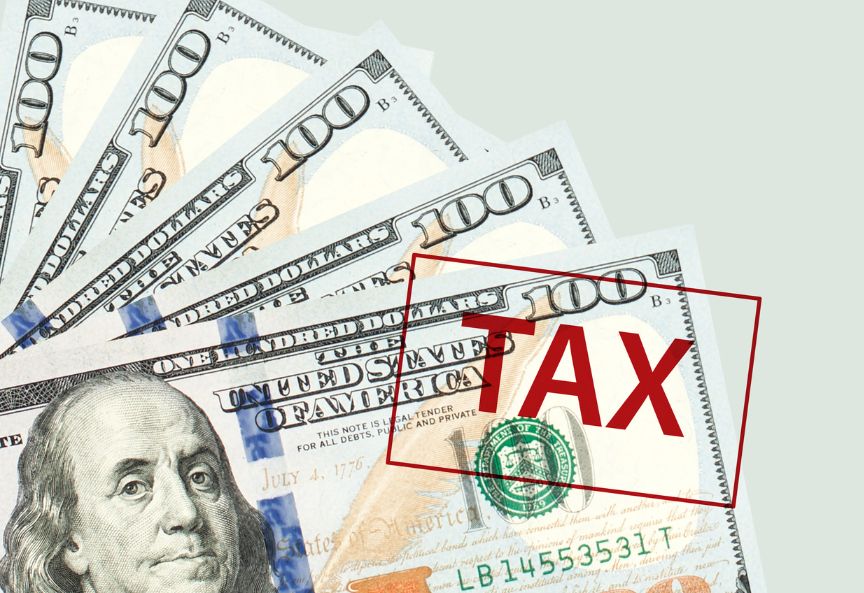Federal tax debt is a serious issue. The government possesses a few more tools than the average creditor, and unlike some debts, the IRS doesn’t easily forgive tax debt. The IRS expects you to pay back what you owe to the best of your abilities, whether a few hundred dollars or several hundred thousand. The urgency with which the IRS will pursue your tax liability may depend on the size and severity of your tax debt. The IRS usually employs two main collection actions to coerce payment: the federal tax lien and the tax levy.
A tax levy is a physical claim of your property, including your home, if it comes down to it. A tax lien is a legal claim of everything you own, superseding other creditors and barring you from securing future financing with your current assets. The IRS will often employ a tax lien before resorting to a levy. Few things can protect a tardy taxpayer against a tax lien. But if your debt is low enough and you act quickly, you can utilize a streamlined installment agreement to avoid a federal tax lien.
What Is an IRS Streamlined Installment Agreement?
Installment agreements are a monthly payment plan wherein you pay off a portion of your tax debt for a maximum of 72 months until you pay it off entirely (including accrued interest, ongoing interest, and penalties). In contrast to short-term payment plans (paying off lump sums within 180 days), installment agreements require regular monthly payments to avoid defaulting.
You must make the payments per the initial installment agreement or any subsequent approved installment agreement. Yet not all installment agreements are made equal. There are four different installment agreements a taxpayer may qualify for, depending on their total debt and willingness to agree to a direct debit monthly withdrawal by the IRS. These four installment agreements are:
- Streamlined installment agreement
- Non-streamlined installment agreement
- Guaranteed installment agreement
- Partial payment installment agreement
If you want to qualify for a streamlined installment agreement, your total federal tax debt needs to be $50,000 or less, and you must agree to make payments through direct debit or payroll deduction. Like every installment agreement, you must be up to date with all tax returns, or the IRS will not accept your deal, meaning filing all late returns even if you’ve already been penalized.
If your tax debt is just above $50,000, you can make a lump sum payment to the IRS. Do this to bring yourself below the $50,000 threshold before entering into an installment agreement. If your tax debt is $25,000 or less, you can enter into a streamlined installment agreement without direct debit or a payroll deduction.
IRS Streamlined Installment Agreement Benefits
A streamlined installment agreement allows you to enter a monthly payment plan with the IRS:
- Without requiring a complete financial checkup through a Collection Information Statement, and;
- Without a federal tax lien, as long as you do not default on the agreement or miss any payments.
A streamlined installment agreement helps you avoid a federal tax lien if your debt is $50,000 or less. Furthermore, you can apply for both streamlined and guaranteed installment agreements online.
Guaranteed vs. Streamlined Installment Agreements
Streamlined installment agreements are comparable to guaranteed agreements, which require you to owe $10,000 or less. You must be entirely updated with your tax returns and outstanding due taxes. Furthermore, you must not have entered into a previous installment agreement with the IRS in the last five years to qualify for a guaranteed installment agreement.
The difference between a streamlined installment agreement and a guaranteed installment agreement is that a guaranteed installment agreement has maximum longevity of three years. Meanwhile, a streamlined installment agreement usually splits your debt into 72 monthly payments by default. Both agreements allow taxpayers to avoid a federal tax lien and, by extension, a levy – if they do not default on their agreements.
What If I Owe More?
Suppose you owe more than $50,000 to the IRS and cannot meet the minimum before entering a payment plan with the government. In that case, your only remaining option is to file a non-streamlined installment agreement, also known as a routine installment agreement. You cannot file a non-streamlined installment agreement online. To enter into a routine installment agreement with the IRS, you must fill out Form 9465, Installment Agreement Request, and Form 433-F, Collection Information Statement, and send both in by mail or at your nearest IRS field office.
A routine installment agreement is available to taxpayers with a total debt of more than $50,000. In contrast to a streamlined or guaranteed payment plan, a standard installment agreement does not ensure that the IRS won’t place a federal tax lien on your tax account. It also requires a thorough financial checkup. This means processing may take more time than the other, more straightforward installment payment plans.
Tolling Period and Partial Payment Installment Agreements
While the IRS reviews your request, they postpone your debt expiration date, often referred to as a tolling period. Your tax debt expires after ten years. Despite this, the months the IRS might take to review your installment request don’t count towards that timer. Furthermore, you will need to pay your debt off within 72 months. Partial payment installment agreements are a rare fourth option for taxpayers who cannot pay back what they owe before their debt expires. Partial payment plans allow you to pay as much as you can.
You must submit a Collection Information Statement for the IRS to determine that you cannot pay off your entire tax debt. However, the IRS reserves the right to charge you more if your financial situation improves. This is why most tax professionals will recommend an offer in compromise instead. This similar payment plan limits your debt, and you cannot alter it afterward. However, it can be challenging to qualify for an offer in compromise. Most tax professionals don’t recommend sending the IRS a request without deliberating it with a professional first.
What Happens If I Don’t Pay?
One way or the other, the IRS will try to get cash from you. If you cannot pay off your tax debt and the IRS determines that your finances are insufficient to act on your account, the IRS will deem you currently non-collectible. However, this freezes the timer on your debt, and interest continues to accrue slowly. If you don’t pay, the IRS will begin to levy your assets and wages until your debt is gone.
This means claiming your property and taking a portion of every paycheck directly from your employer. If you are self-employed, the IRS can access your bank accounts instead. Levies are seriously financially damaging. It isn’t worth challenging the IRS on your debt – unless you have the evidence to prove there’s an error. In these cases, you have other means of recourse, including the Independent Office of Appeals and the US Tax Court. Otherwise, consider a payment plan as soon as possible.

